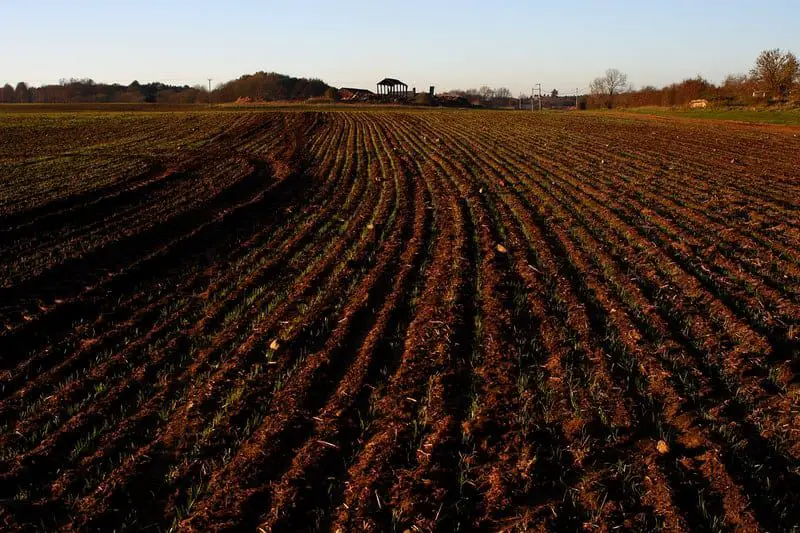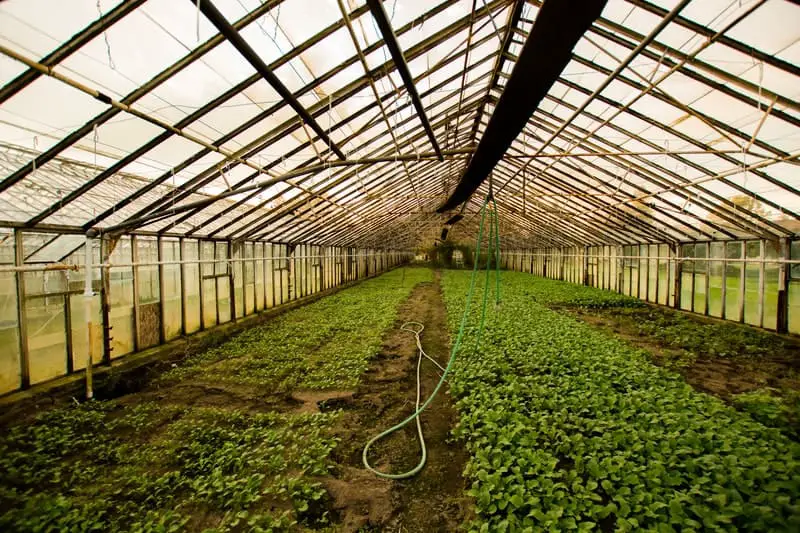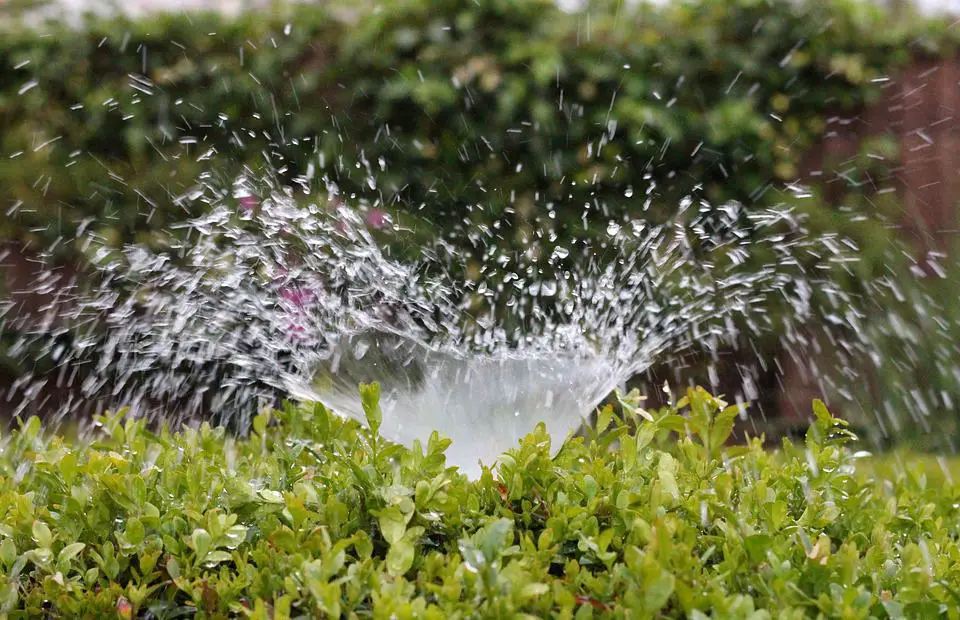Being smart about how we use water in our garden is not only about preserving water; it is also about getting the most out of each plant through proper irrigation. This article will help guide you with 10 smart irrigation tips for your vegetable garden.
Proper irrigation will save you money and time, and your plants will be better–a win-win situation.
According to specialists, less is often more when it comes to irrigating your vegetables. New growers’ common mistake is irrigating too much in regions with a plentiful water supply.
Table of Contents
Vegetable garden irrigating systems
You can irrigate your vegetable garden in several different ways. Basic irrigation methods for veggie gardens involve creating furrows and basins. Watering systems include sprinklers, regular or soaker hoses. The most challenging way to irrigate plants is to set up a drip system.
What are furrows?

Furrows are shallow ditches running between garden rows, which bring water to the plant’s roots. This irrigation technique is based on the traditional farming methodology of sowing on narrow elevated piles or beds and then using furrows for water. The beds could be 1-3 feet away from each other.
When you’re prepared to irrigate, fill your furrows with water, wait a little while, and then feel around with your fingers to ensure the water has reached the plants. While this method has been used for many years for larger-scale agriculture, it is certainly not the most water-efficient method, as you need to flood quite a bit of water into the garden before it reaches the plants.
What are basins or soil rings?

A basin or soil ring is a doughnut-like depression around a veggie plant that you fill with water. You make a basin around the plant in a 2-foot-diameter circle. Many people use this method for larger individual veggies like tomatoes.
Sprinklers

The sprinkler is efficient for irrigating vegetables cultivated in sandy soil that rapidly absorbs water. This method is also an efficient way to water a big garden if you’re pressed for time. Set sprinklers on timers to irrigate your garden as needed at the most advantageous times of the day for your particular site. If you have heavy clay soils or your vegetable patch is on a ridge, you may end up with more water running off than soaking in.
Hoses

Watering with a hose by hand is not the most time-efficient irrigation system, but it is particularly well suited for irrigating pots and for selective watering.
Using hoses, you can be confident that you apply the required amount of water to each individual plant.
Drip irrigation
A drip irrigation system slowly supplies water through perforations in flexible plastic tubes. There are several different types of drip irrigation systems; they can contain a single tube with adaptable lines going off it, a tubing sequence, or just one continuous perforated hose that snakes through the garden and allows the water to soak into the soil. Drip irrigation may be the most efficient watering system, as the water soaks in slowly over a long period of time. Also, water is not lost to evaporation, wind, and runoff as it often is with sprinklers.
10 Smart irrigation tips for your vegetable garden

Read on to see ten tried-and-tested tips that can help you conserve water without leaving your plants thirsty.
- Water selectively – Irrigating by hand means that you can be more specific about which plants to water–only water if it’s needed. The best test is to simply push your finger into the ground near the plant’s root. If it is cool and moist, no water is needed.
- Irrigate at the right time. – When you irrigate can make a significant difference in how much water your vegetables get. Watering early in the morning provides the plants with plenty of time to absorb water before the hot sun comes out and begins to evaporate it. Also, any moisture that gets on the leaves will have sufficient time to dry out before the nighttime, mitigating the chance of slugs and fungal infections.
- Aim carefully – If you are watering by hand, be accurate. Water near the plant’s roots, but be sure not to wash the soil away. Bare roots dry out very quickly in the hot sun. While spraying the entire plant with water may not be a good idea in the hot sun of mid-day, a light spray in the early morning can wash off bugs and dust and allow the plant to soak in some topical water as well. Typically, a deep watering every once in a while is better than many light waterings as it encourages deep root growth, which will make for more drought-hardy plants.
- Trap water – Plastic containers with many tiny perforations make superb mini water storage tanks. These containers can be purchased commercially or can be made at home. Bury them up to their edge near thirsty plants, then pour water into the container. This will allow the water to soak into the root area instead of running off on the surface. There are also above-ground water storage systems that allow the soil to soak in slowly.
- Irrigate efficiently – If you want to optimize your irrigation, use drip irrigation and soaker hoses over broadcast sprinkler systems. Any system that shoots water into the air is most certainly wasting water by losing it to wind, evaporation, runoff, and simply missing the intended root zone. Put your irrigation system on a timer, and be sure to monitor the weather so that you aren’t watering needlessly.
- Pick pots carefully – If your plants are in pots, it pays to consider the type of pot that you use. Clay pots are very porous, so they allow moisture to drain, and they can be cool depending on their color. Some of the newer style fiberglass or foam pots have the stone or ceramic look but have the advantage of keeping the plants cooler, and they are lightweight, which makes them easier to work with. Metal and black plastic pots heat up pretty quickly, speeding up the moisture loss and acting more like an oven for your plant roots. However, you can always keep the sun off of these pots by wrapping them in a lighter material or by gathering pots together, so they shade each other a bit and slow water loss.
- Add organic matter – Soils with high organic content absorb and hold water quite easily. Add well-milled manure or compost to beds whenever you get the opportunity. Adding organic matter to your garden through the year in thin layers is an excellent way to keep plants fertilized and help conserve water.
- Mulch regularly – Putting mulches over soil surface significantly slows down evaporation. You can use almost any porous material to shade and protect the soil, but it’s best to use well-milled organic material, like compost, leaves, and clippings which will also help supply the vegetables with nutrients as they develop. Applying mulches in two-inch layers will shade the soil to conserve moisture and will have the added benefit of discouraging weed growth.
- Collect rainwater – Capturing rainwater not only saves valuable drinking water, but it’s healthier for your plants as well. Collecting rainwater from your roof and using it to water your vegetable garden is an excellent way to conserve water usage. There are many homemade and commercially available systems available. It doesn’t need to be complicated. Catch the water in barrels and run hoses out of the bottom of the barrel to water veggies.
- Avoid weeds – Any weeds in your garden will compete with your veggies for nutrients and water. Keeping your garden relatively weed-free will help to conserve these resources. Avoid tilling as this breaks down soil structure. Instead, hand pull and mulch as described above.
Conclusion
Wise irrigation techniques can create wonderful results in your vegetable garden, lessening your work and creating vibrant and healthy plants with high yields.
Plant your garden with irrigation needs in mind and group similar plants together while leaving yourself plenty of room to work will also make life easier.

